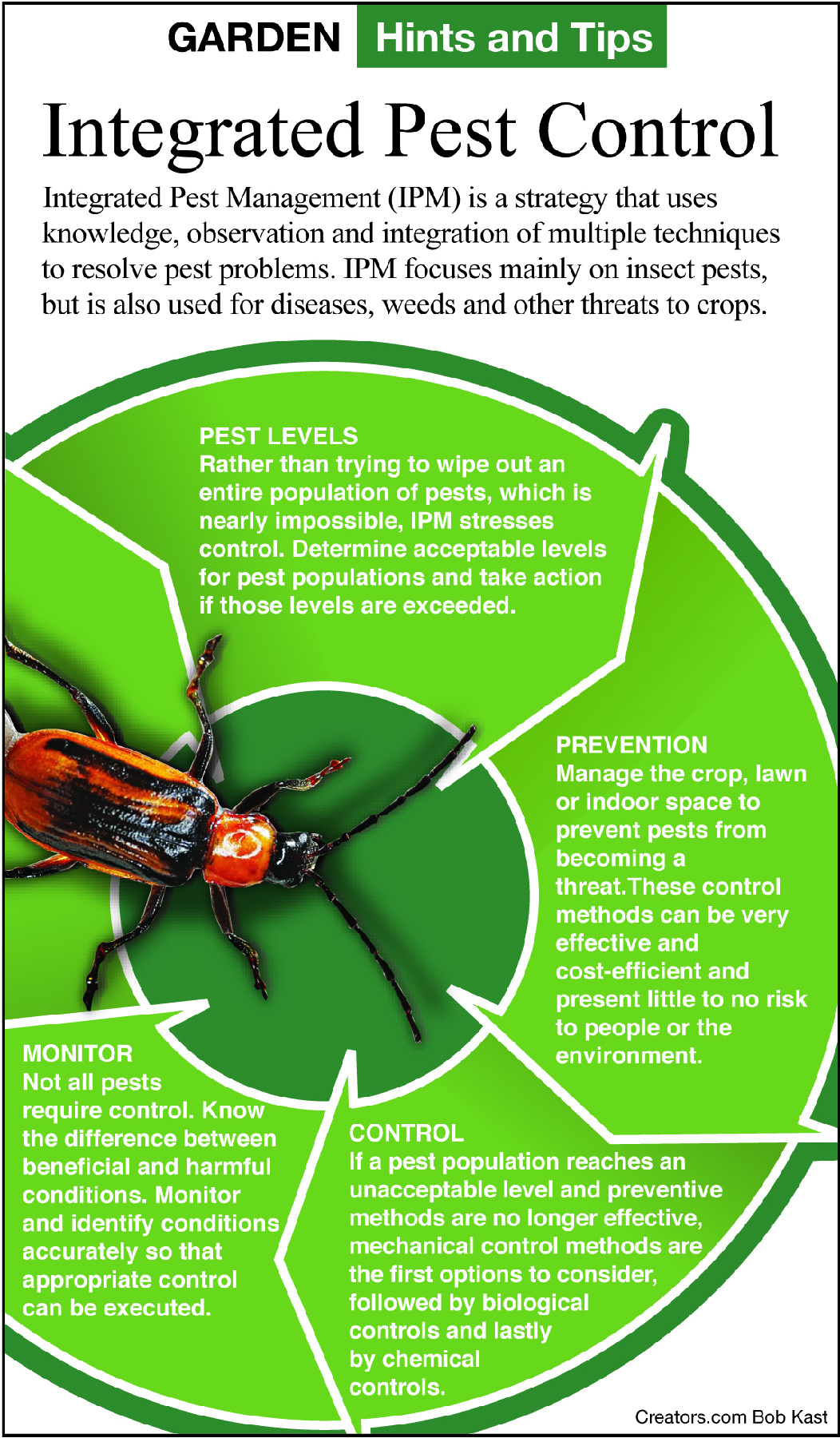Excitement About Pestwise
Excitement About Pestwise
Blog Article
The 7-Second Trick For Pestwise
Table of ContentsMore About Pestwise10 Easy Facts About Pestwise ExplainedWhat Does Pestwise Do?Pestwise Fundamentals ExplainedAn Unbiased View of PestwiseThe Single Strategy To Use For PestwiseUnknown Facts About Pestwise

Q. Define "incorporated bug administration" (IPM) and list numerous possible control tactics that might be utilized in an IPM strategy. A. Integrated parasite administration is the combining of proper insect control methods into a solitary plan to reduce bugs and their damage to an appropriate level. Pest control techniques might include: host resistance, organic control, cultural control, mechanical control, sanitation, and chemical (pesticide) control.
More About Pestwise
What can you do to keep the pests you are trying to manage from becoming resistant to the pesticides you make use of? A. Pest resistance can be minimized by using integrated insect monitoring and revolving the kinds of pesticides utilized.
Parasites are an essential threat to the farming organization, and integrated insect administration aids farmers address and minimize these risks. Integrated pest management utilizes numerous approaches in complex, thus being a more effective service to the issue. Pest Control Services. Particularly, getting rid of aggressive chemical approaches enables reducing harm to people and the environment by utilizing natural and much safer choices instead
Pestwise for Dummies
The objective of integrated pest management is to minimize this injury and control acceptable invasion levels instead of remove all unwanted populaces. This is why it is important to comprehend what measures are warranted in each situation and usage hostile ones only when various other incorporated management techniques do not work. Integrated monitoring alleviates the unfavorable repercussions of a non-IPM approach, and the main advantages of IPM Advantages of IPM.
A proper understanding of the invasion scope determines if the issue should be resolved. are the next parts of an IPM program because it is necessary to recognize if the microorganisms make potential threats and select the incorporated management choices or the specific chemical usage. intend to minimize problems by using different agronomic methods.
The Best Guide To Pestwise
if avoidance was ineffective. Integrated management options in an IPM program beginning with safer to extra hostile ones. As an example, target or program chemical spraying may comply with manual removal or capturing that hasn't assisted. The above-mentioned integrated management aspects help understand exactly how to prepare and apply an IPM program detailed: Display your crops routinely.

Among others, IPM social methods include the adhering to field administration strategies: dirt treatment; choice of ideal plants; plant rotation; interplanting or strip cropping; option of growing dates; weed control; use of catch plants. Beneficial soil conditions speed up plant link growth, and strenuous plants are much more resistant to problems. Healthy seedlings and seeds predetermine successful crop development, so it is crucial to choose pest-free planting material with solid origins.
Hence, to name a few applications, crop rotation can be successfully made use of as an integrated insect monitoring approach. Vermin spread slower if rows of different crop types divide their host plants in intercropping or strip cropping, which is also used in the integrated insect administration system. Conversely, infestations enhance when plants of the exact same crop type or family grow together.
Likewise, potato beetles can hurt growing potatoes, in addition to tomatoes. Growing trap plants in patches is another alternative for IPM intercropping. This incorporated pest management approach recommends drawing in insects to specific plants and then controlling them with chemical or mechanical techniques. In particular, you can expand soybeans as trap crops for Japanese beetles.
The 10-Minute Rule for Pestwise
Barriers are case in points of physical IPM methods. Let's take a more detailed look at them. Getting rid of or picking parasites out manually is a time and labor-consuming choice that is commonly applied in integrated monitoring and chemical-free farming. Fully grown insects or their eggs and larvae are accumulated by hand and ruined.

Department of Plant Sciences. University of Missouri. Dirt solarization is an effective integrated administration strategy to sanitize the area by warming it in a natural way. This incorporated monitoring method suggests an usual way of ruining bugs by killers, parasitoids, pathogens, and other biological control agents (aka hostile organisms). The function of organic control in IPM is to.
8 Easy Facts About Pestwise Described
With time, their population ended up being a genuine hassle to farmers along with aboriginal kangaroos or dingoes. The cane toad is one more situation illustrating incorporated biological control failure in this respect when it rejected to quest the target types and came to be a parasite itself. Parasitoids develop on or within their hosts to ultimately eliminate them after developing.
Report this page